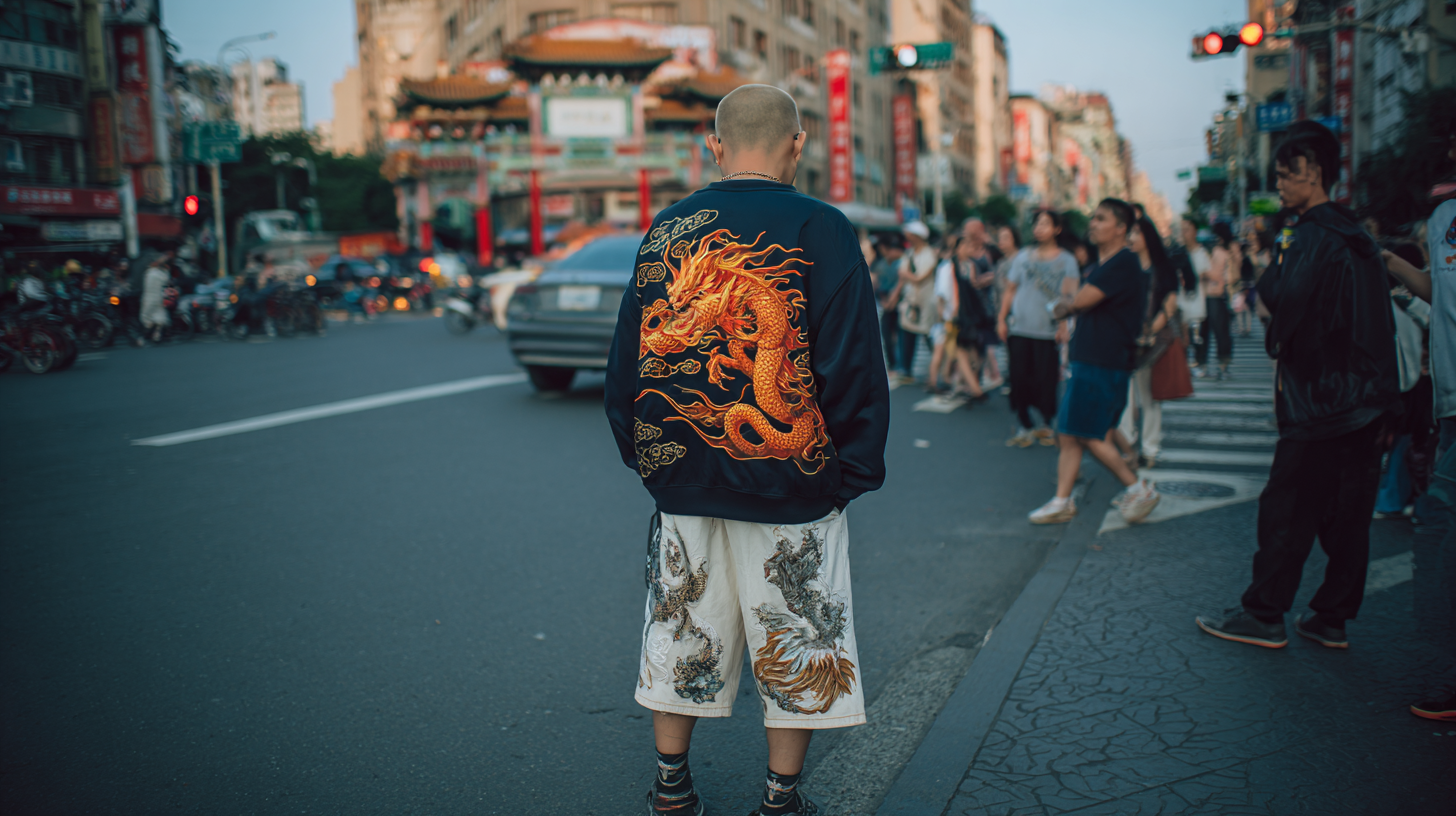Leave Your Message
As China continues to solidify its position as a global powerhouse in manufacturing, trends in the apparel industry, particularly in casual wear, are gaining noteworthy attention. According to a recent report by McKinsey & Company, the demand for comfortable and versatile clothing is expected to rise significantly, with styles like Baggy Pants White becoming a staple in the wardrobes of consumers worldwide. As we approach 2025, the industry is witnessing a shift driven by innovation and sustainability, aiming for a market size of $500 billion in the global apparel sector. This transformation not only highlights China's manufacturing prowess but also showcases how local trends can influence global fashion. In this blog, we will delve into the technical trends surrounding the production of Baggy Pants White and explore their impact on the future of manufacturing.

China has solidified its role as a powerhouse in global manufacturing, particularly noted in the production of versatile products like baggy pants in white. As a leader in the manufacturing sector, China boasts impressive statistics that reflect its supremacy. With a staggering share of the world's manufacturing output, the country not only meets domestic demands but also caters to international markets. This dominance can be attributed to several factors, including a vast workforce, advanced technology, and well-established supply chains.
Tips for consumers looking to purchase high-quality baggy pants include being mindful of the fabric and production methods. Opt for brands that prioritize sustainable practices and ethical manufacturing to ensure that your purchase contributes positively to both the environment and workers' rights. Additionally, pay attention to sizing and fit, as many manufacturers may have different sizing standards. Finally, consider the long-term value of your purchase; investing in durable, well-made pants can save money in the long run and reduce textile waste.
When exploring options for baggy pants, it's beneficial to look for companies that highlight their production origins and sustainable practices. This not only supports responsible manufacturing but also encourages a more ethical approach to consumerism in a market dominated by mass production. By being an informed buyer, you help promote positive changes in the fashion industry.
| Dimension | Value |
|---|---|
| Total Manufacturing Output (2022) | $4.5 trillion |
| Percentage of Global Manufacturing (2022) | 28% |
| Manufacturing Employment (2021) | 150 million |
| Key Export Products (2022) | Electronics, Textiles, Machinery |
| Foreign Direct Investment (2021) | $168 billion |
| R&D Expenditure in Manufacturing (2022) | $30 billion |
| Automation Adoption Rate (2022) | 50% |
The rise of baggy pants in recent years has significantly reshaped the landscape of fashion, with increasing market demand evident across various demographics. Initially popularized in the 1980s and 1990s, baggy pants have made a remarkable comeback, driven by a collective desire for comfort and versatility in everyday attire. Influences from streetwear and high fashion alike have reinvigorated this trend, showcasing how baggy pants can be styled for both casual outings and more polished events.
As consumers seek clothing that balances style and comfort, brands worldwide are prioritizing baggy silhouettes in their collections. From luxury designers to fast fashion brands, this shift reflects a broader cultural movement toward inclusivity and self-expression through fashion. China, as a leading player in global manufacturing, has been quick to adapt to these trends, producing high-quality, stylish baggy pants that cater to the evolving preferences of the market. With their ability to appeal to a wide audience, baggy pants are not just a fleeting trend; they represent a significant transformation in contemporary fashion paradigms.

China has solidified its reputation as a global manufacturing powerhouse, particularly in the production of essential clothing items like baggy pants. The country accounts for approximately 28% of the world's total manufacturing output, a figure that highlights its unmatched capacity and efficiency. A study by McKinsey & Company reported that the global apparel market is projected to reach $2 trillion by 2025, with China remaining a key player in meeting this demand through its extensive supply chain and skilled workforce.
Quality assurance in Chinese manufacturing has become increasingly sophisticated, driven by pressure from international brands and consumers alike. Case studies reveal that manufacturers are now employing advanced quality control methods, such as Six Sigma and lean manufacturing principles, to enhance product quality and reduce waste. According to a report by the International Federation of Robotics, the adoption of industrial robots in China has increased dramatically, up by 20% from 2019 to 2020, facilitating greater precision and consistency in production processes. This shift not only boosts the quality of products like baggy pants but also ensures that manufacturers can adapt swiftly to consumer needs, solidifying their position in the global market.
China has established itself as a pivotal player in the global garment industry, particularly in the production of casual wear like baggy pants. As sustainability becomes a pressing concern, China’s garment manufacturers are adopting practices that align with eco-friendly standards. This shift not only meets consumer demand for responsible production but also enhances the international reputation of Chinese brands.
To embrace sustainability in fashion, manufacturers are focusing on eco-friendly materials like organic cotton and recycled fabrics. Implementing water-efficient dyeing processes and reducing energy consumption are also critical steps in minimizing environmental impact. Tips for conscious consumers include researching brands that prioritize sustainability and choosing clothing items crafted from sustainable materials.
Moreover, understanding supply chain transparency is essential. Consumers should look for brands that disclose their manufacturing practices and advocate for fair wages. Supporting local artisans and opting for timeless designs rather than fast fashion can further contribute to a more sustainable garment industry. By making informed choices, shoppers can play an active role in fostering sustainability in China's manufacturing landscape.
China has solidified its position as a pivotal player in the global supply chain, especially in apparel production. Its vast manufacturing capabilities, coupled with an extensive network of suppliers, allow for rapid production cycles that meet ever-changing consumer demands. The country's investment in technology and automation has further enhanced efficiency, enabling manufacturers to maintain high-quality standards while keeping costs competitive. This sophisticated infrastructure supports the production of various products, including the best baggy pants in white, which have become a staple in contemporary fashion.

The dynamics of global supply chains are constantly evolving, with China at the center of this transformation. As brands look to optimize their production processes, many are turning to Chinese manufacturers for their expertise and scalability. This trend is particularly evident in the apparel sector, where China's ability to mass-produce garments quickly ensures that retailers can rapidly restock popular items. As sustainability becomes a more pressing concern, China's factories are also adapting by incorporating eco-friendly practices, further solidifying their role as leaders in the international apparel market.
